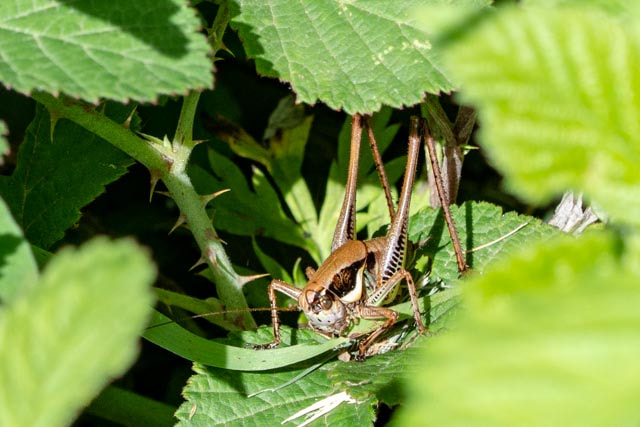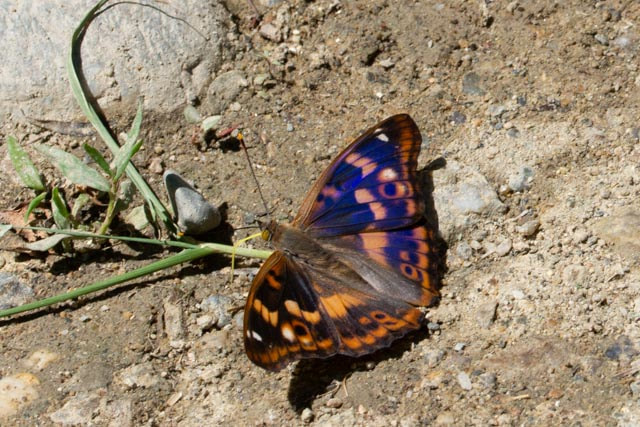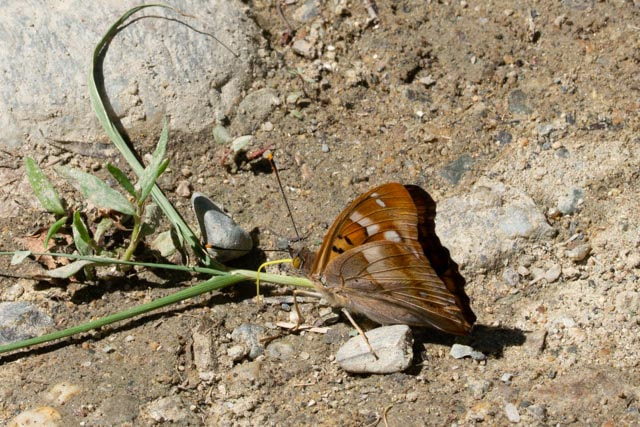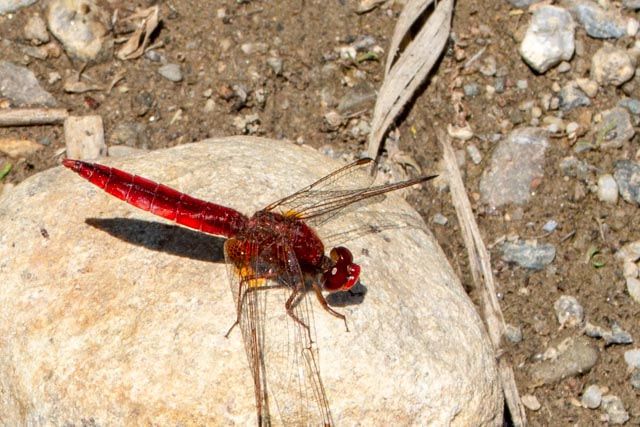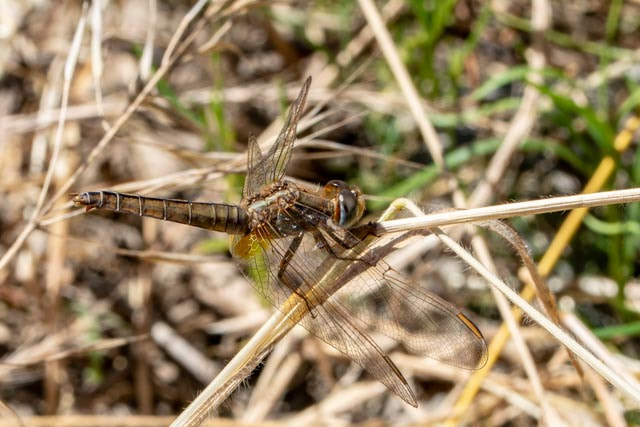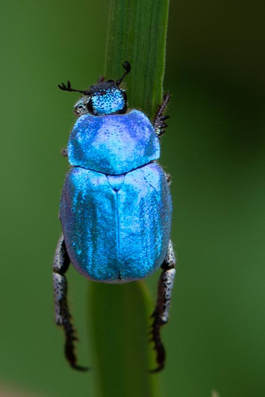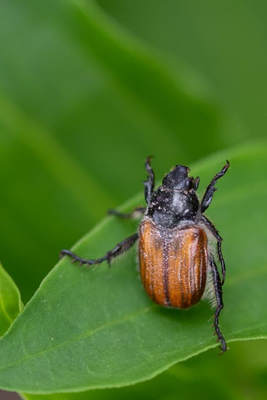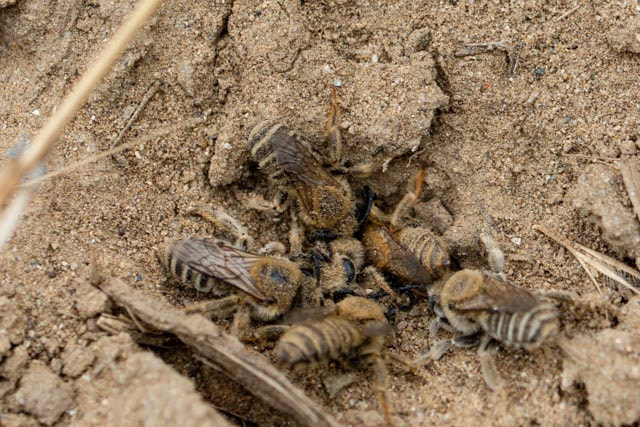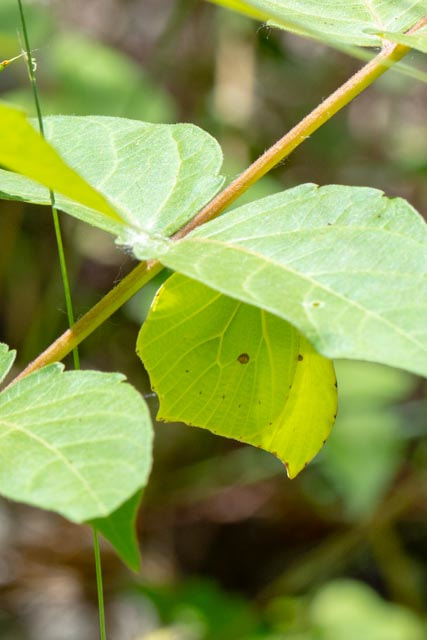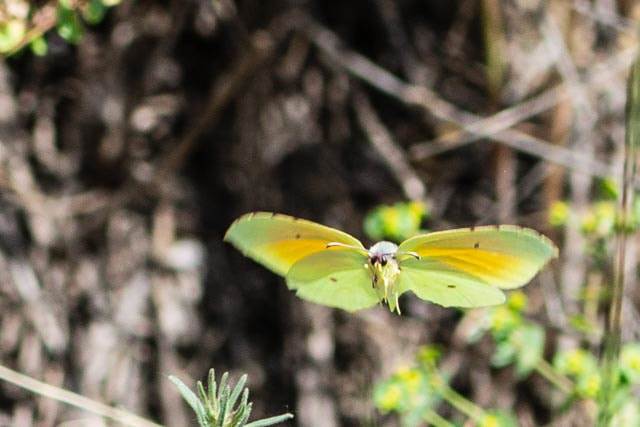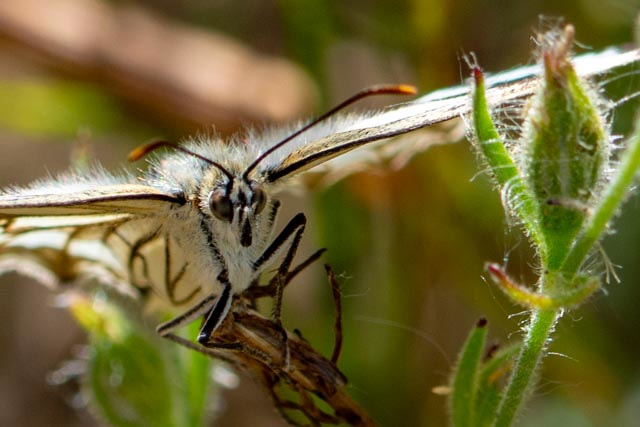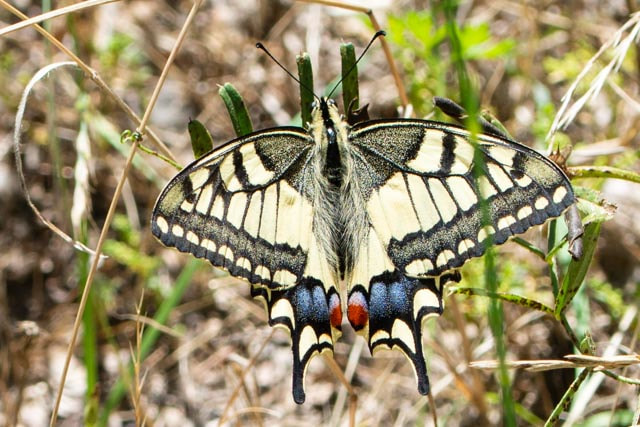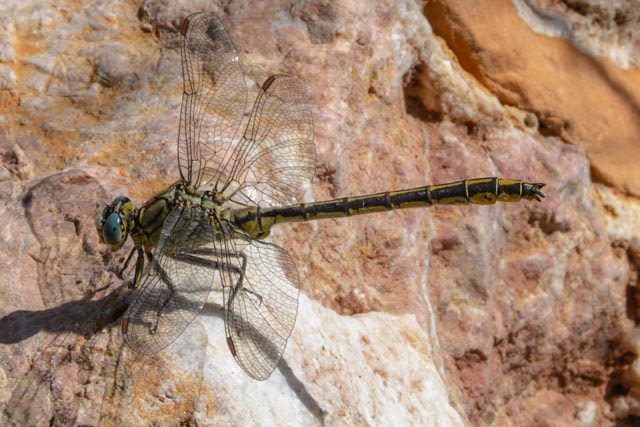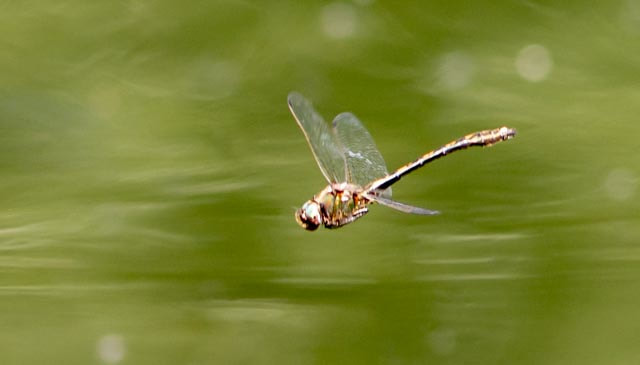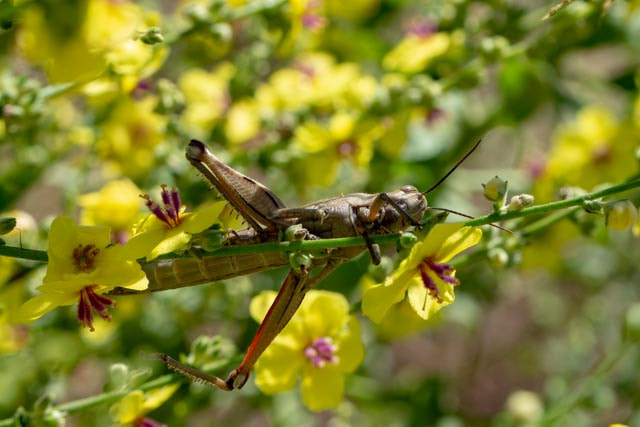By Bruce Hyde
One of the first insects I saw, and new to me, was this lovely little Roesel's bush-cricket (Metrioptera roeseli).
The difference between the upper side and underneath of the wings always surprises me. The underside has no trace at all of the purple gloss.
The other, called a Monkey Beetle (Hoplia philanthus), still a handsome creature, had lovely chestnut brown wing covers (elytra). In fact, these are the first of their two pairs of wings, but they are not used for flying. In beetles they have evolved instead to protect the soft abdomen and delicate structure of the second pair, which they use for flying.
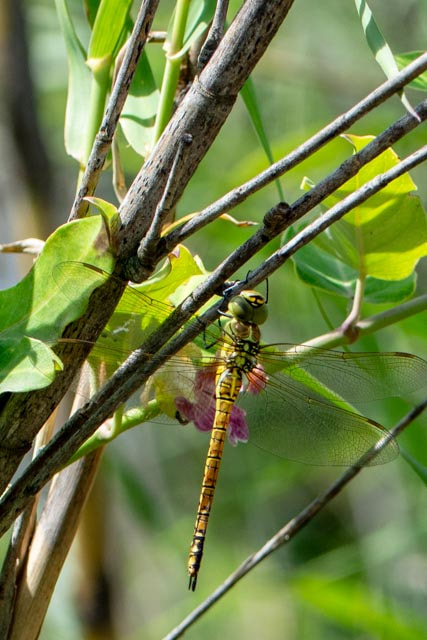 Female Blue-eyed Hawker
Female Blue-eyed Hawker In my French reference book Les Libellules de France, Belgique et Luxembourg they are listed as not being present at all by the Tech. It is clear they are extending their range in France and there have even been a few sightings this summer across the Channel in England, as reported by the British Dragonfly Society.
Another fine example of camouflage is the Brimstone butterfly (Gonepteryx rhamni). Among the leaves on a bush, this one was almost invisible.
While some butterflies are quite tolerant of being approached, others are rather skittish. The Iberian Marbled White (Melanargia lachesis) is just like that and is notorious for the way it flits around, seldom settling. This time I was lucky!
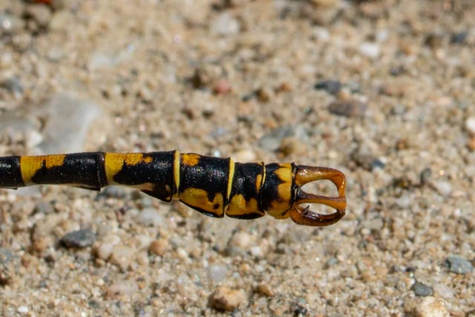 The formidable graspers of a male Pincertail
The formidable graspers of a male Pincertail  A typical Tech riverside scene which makes the point.
A typical Tech riverside scene which makes the point. My next blog will see us in the high Pyrénées where the flora and fauna, not to mention the views, are so very different.
